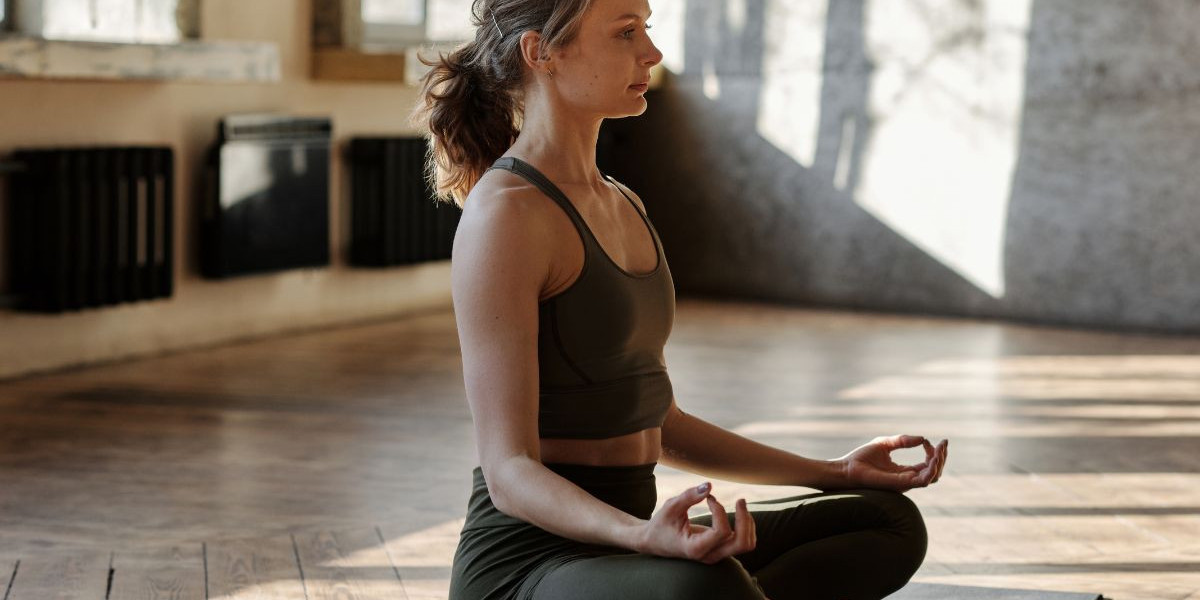When we think about physical health, we often focus on visible muscles like abs, arms, or legs. But deep within our body lies an unsung hero — the pelvic floor. These muscles form the very foundation of our core strength, supporting the bladder, bowels, and reproductive organs. Pelvic floor yoga is a simple yet transformative practice that brings attention, strength, and balance to this vital area, helping you achieve better stability, wellness, and inner confidence.
What Is the Pelvic Floor?
The pelvic floor is a web of muscles, ligaments, and connective tissue located at the base of your pelvis. These muscles act like a flexible sling, supporting your organs and working in sync with your diaphragm, abdominal muscles, and lower back. A healthy pelvic floor is essential for maintaining continence, sexual health, posture, and even breathing patterns.
Weakness, tightness, or imbalance in these muscles can lead to a wide range of issues, including lower back pain, incontinence, pelvic organ prolapse, and chronic pelvic pain. Stress, childbirth, heavy lifting, surgery, and aging can all affect pelvic floor health.
That’s where yoga comes in — offering gentle, mindful movements to restore strength, flexibility, and awareness.
How Pelvic Floor Yoga Helps
Pelvic floor yoga isn’t just about squeezing or tightening muscles. It’s about creating a healthy balance — knowing when to engage and when to relax. This approach supports:
Core strength and spinal stability
Better bladder and bowel control
Improved posture and alignment
Relief from pelvic pain and tension
Enhanced sexual vitality and sensation
Calmer nervous system through mindful breathing
By integrating the pelvic floor into your yoga practice, you enhance the overall health of your body and mind.
Essential Pelvic Floor Yoga Poses to Try
1. Bridge Pose (Setu Bandhasana):
Gently lifts the hips and engages the glutes, hamstrings, and pelvic floor. Holding this pose helps build endurance and strength.
2. Happy Baby Pose (Ananda Balasana):
Releases tightness in the hips and pelvic floor, promoting relaxation and flexibility.
3. Cat-Cow Flow (Marjaryasana-Bitilasana):
This dynamic movement strengthens and stretches the spine while subtly engaging the pelvic muscles with each breath.
4. Deep Squat (Malasana):
Opens the hips and pelvis, creating space and promoting circulation in the lower body.
5. Reclining Butterfly Pose (Supta Baddha Konasana):
A deeply restorative posture that allows the pelvic floor to soften and release tension.
These poses, combined with conscious breathing, create a holistic practice that nurtures the pelvic region without straining it.
Breathing: The Bridge Between Mind and Pelvic Floor
Breathwork is a cornerstone of pelvic floor yoga. Every inhale naturally relaxes the pelvic floor, while every exhale gently engages it. Training this coordination improves muscle function and reduces unconscious tension.
Pelvic Floor Breathing Tip:
Sit or lie down comfortably.
Inhale deeply, feeling the belly and pelvic floor expand.
Exhale slowly, visualizing the pelvic floor lifting and drawing in.
Continue for several minutes, maintaining softness and awareness.
Practicing this daily can make a noticeable difference in how your pelvic floor supports you during yoga and everyday life.
Signs You Could Benefit from Pelvic Floor Yoga
Leaking urine when laughing, sneezing, or running
Feeling a heaviness or pressure in the pelvic area
Chronic lower back or hip pain
Pain or discomfort during intercourse
Difficulty with core engagement or stability
If you notice any of these signs, adding pelvic floor yoga to your wellness routine can help restore balance and strength.
Important Tips for Practicing Safely
Be Gentle: Avoid forceful contractions or overworking the muscles.
Focus on Awareness: Quality of movement is more important than quantity.
Use Props: Blocks, bolsters, and blankets can help you find comfort and proper alignment.
Progress Gradually: Start with breathwork and basic poses before moving into more advanced practices.
Consult a Professional: If you experience persistent symptoms, work with a pelvic floor therapist or yoga instructor trained in pelvic health.
Conclusion
Pelvic floor yoga is a gentle yet powerful practice that reconnects you with your body’s true foundation. Through mindful movement, focused breathing, and compassionate awareness, you can build resilience, release tension, and cultivate a deeper sense of well-being. Whether you’re looking to heal, strengthen, or simply invest in your future health, dedicating time to your pelvic floor is one of the most empowering choices you can make. Start today — your body will thank you for it.







